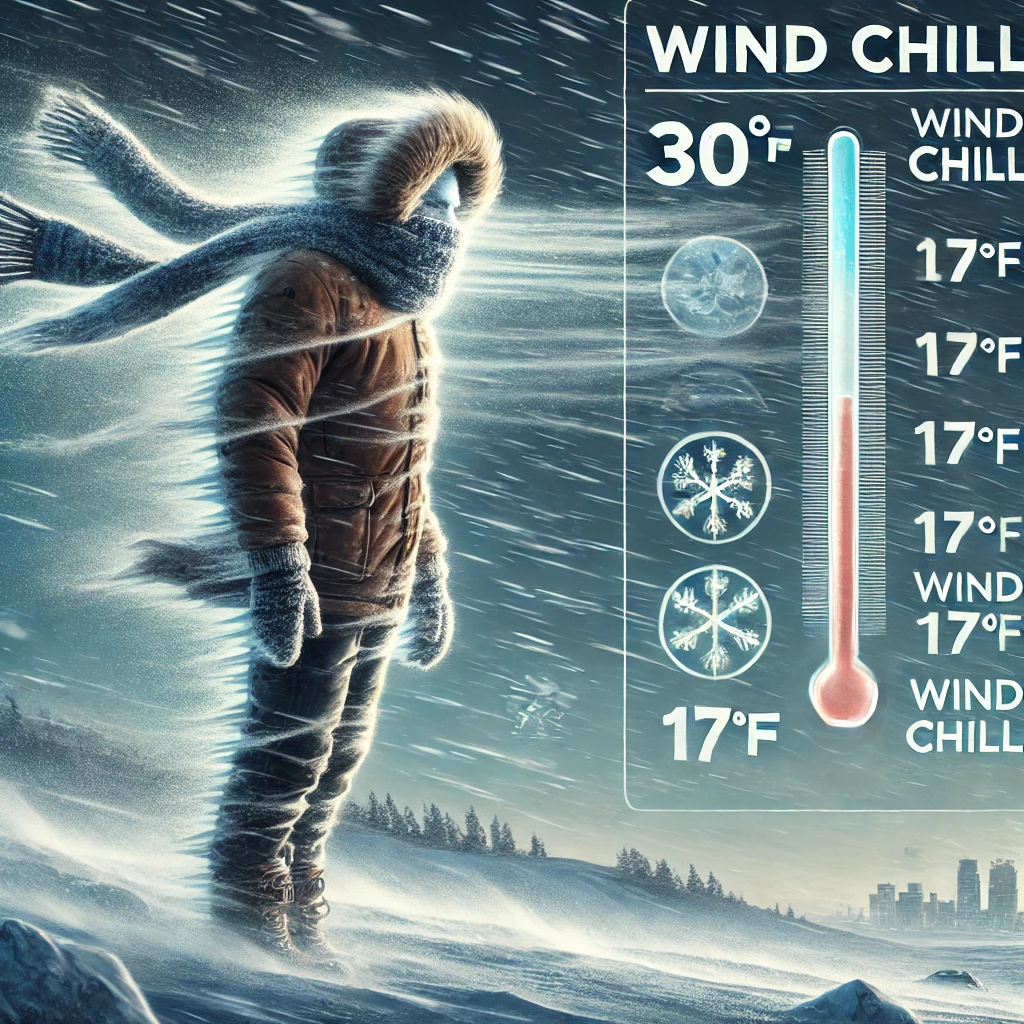Understanding Wind Chill: How It's Calculated and Why It Matters
Introduction
Wind chill is a crucial factor in cold weather, determining how cold it actually feels outside rather than just the temperature measured by a thermometer. It is influenced by wind speed and temperature, and understanding it can help prevent frostbite and hypothermia.
What is Wind Chill?
Wind chill refers to the perceived decrease in temperature due to the effect of wind on the human body. When the wind blows, it removes the thin layer of warm air surrounding the skin, making it feel much colder than the actual air temperature.
Wind Chill Formula
The most commonly used wind chill calculation is provided by the National Weather Service (NWS) for temperatures at or below 50°F (10°C) and wind speeds above 3 mph (4.8 km/h). The formula is:
WCT = 35.74 + 0.6215T - 35.75(V0.16) + 0.4275T(V0.16)
Where:
- WCT = Wind Chill Temperature (°F)
- T = Actual Air Temperature (°F)
- V = Wind Speed (mph)

Why Wind Chill Matters
1. Risk of Frostbite and Hypothermia
Frostbite occurs when skin and underlying tissues freeze, typically on exposed areas like fingers, ears, and the nose. Hypothermia occurs when the body loses heat faster than it can produce it, leading to dangerously low core body temperature.
2. Impact on Outdoor Activities
Outdoor workers, hikers, and athletes should be aware of wind chill to dress appropriately. Schools and workplaces may issue warnings based on wind chill levels.
3. Effect on Energy Use
Heating systems work harder in windy conditions as buildings lose heat more quickly. Wind chill helps meteorologists provide better guidance on energy needs.
Wind Chill Chart
| Air Temp (°F) | 5 mph | 10 mph | 15 mph | 20 mph | 25 mph | 30 mph |
|---|---|---|---|---|---|---|
| 30 | 25 | 21 | 19 | 17 | 16 | 15 |
| 20 | 15 | 9 | 6 | 4 | 3 | 1 |
| 10 | 3 | -4 | -7 | -9 | -11 | -12 |
| 0 | -10 | -16 | -19 | -22 | -24 | -26 |
How to Stay Safe
- Dress in Layers: Wear thermal layers, windproof outerwear, hats, and gloves.
- Limit Exposure: Stay indoors during extreme cold and take frequent warm-up breaks if outside.
- Monitor Weather Reports: Use wind chill forecasts to plan activities.
Conclusion
Wind chill is a vital factor in winter weather, affecting both comfort and safety. Understanding how it is calculated helps in making informed decisions about outdoor exposure and proper cold-weather protection. Stay aware of wind chill values to protect yourself and others during extreme cold conditions.